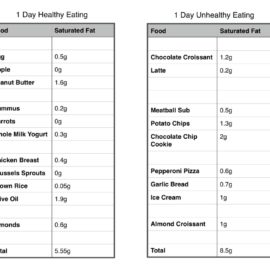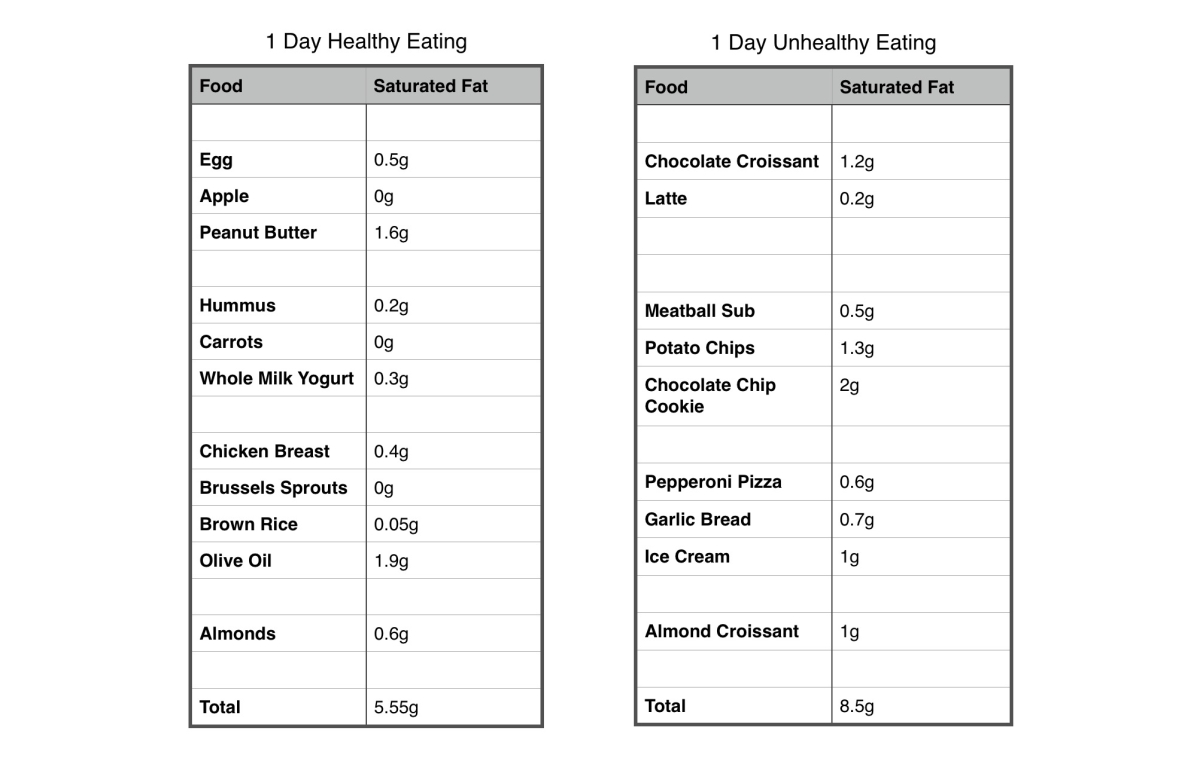Nutrition is a complex subject. The good news is, you can usually deal with it by using pretty broad strokes. This past week, I was reminded of this while working on a post.
Nutrition Should Be Approached Broadly
For most people, simple but sweeping changes in nutrition usually cover all the bases. It can be tempting to fall into the trap of looking at every little detail, like whether agave nectar is better than white sugar, or if you should supplement with tumeric, when in reality general improvements are all you need. Take for example this chart about saturated fat.
Note: The measurements are for approximately 14g to make for easy comparison. It does not represent serving sizes.
In this chart, I compare one day of healthy eating to one day of unhealthy eating. What you can see is that following a healthy eating pattern consisting of whole foods like fruits, vegetables, nuts, and lean meats automatically lowers saturated fat intake as compared to a diet filled with processed and/or fast food.
Good Habits Make The Details Irrelevant
The point is you don’t need to know too much about saturated fat, because healthy eating lowers it anyway. The broad pattern makes the point moot. (Unless, of course, you have a specific reason to be more detailed, like a doctor’s direction, etc.) This point is important because it is easy to get bogged down in the details before you have taken care of the low hanging fruit. If you are thinking about making a change in your eating habits, just start with the simplest adjustments. Mastery of those things, without over-analyzing the details, will bring the biggest successes.


Pingback: Fat Vs. Sugar Vs. FDA - A Recent History - do the movement March 1, 2017
[…] and nutrition. Here’s an intersting little chronology I noticed that has unfolded involving fat, sugar, and the […]